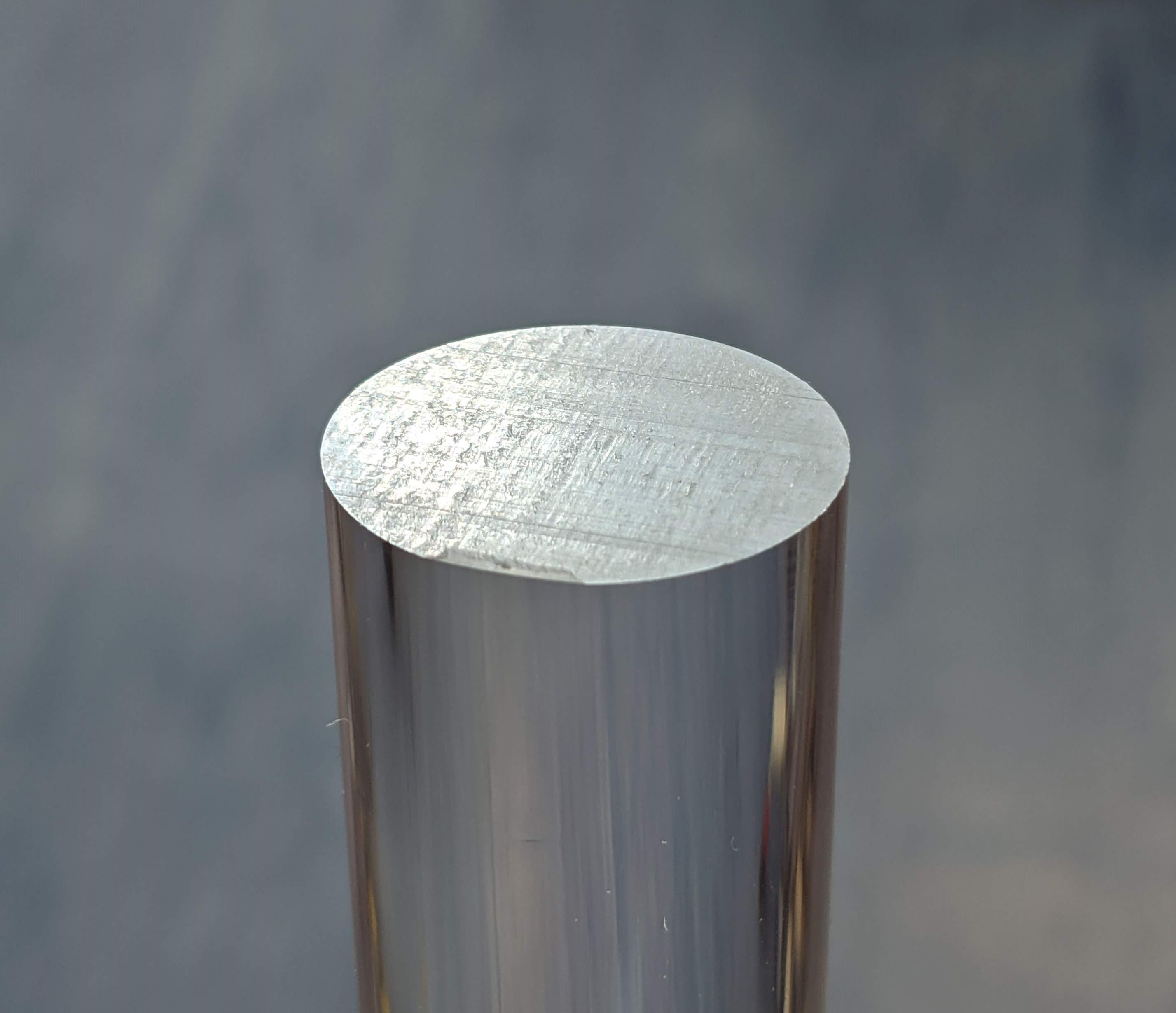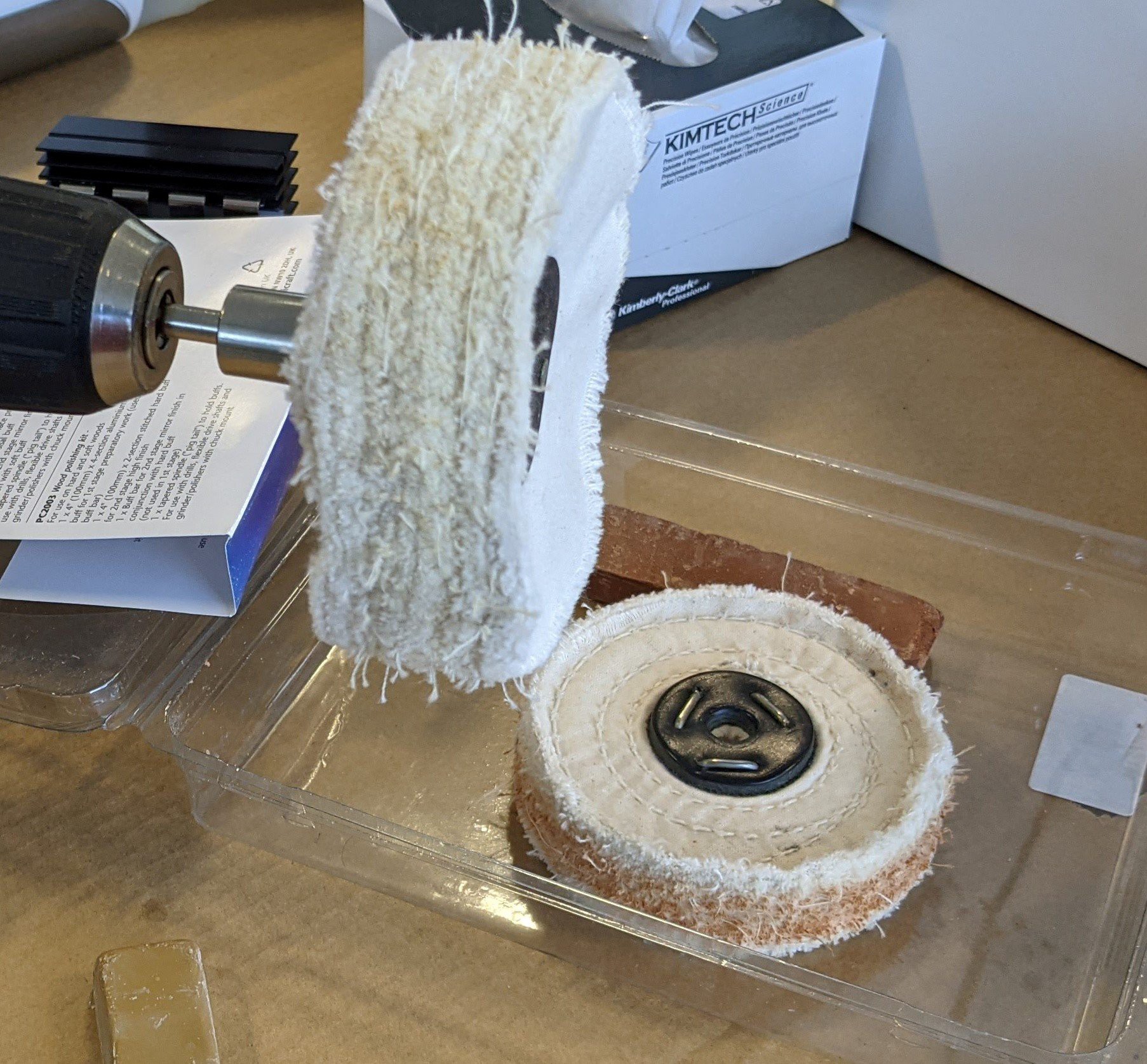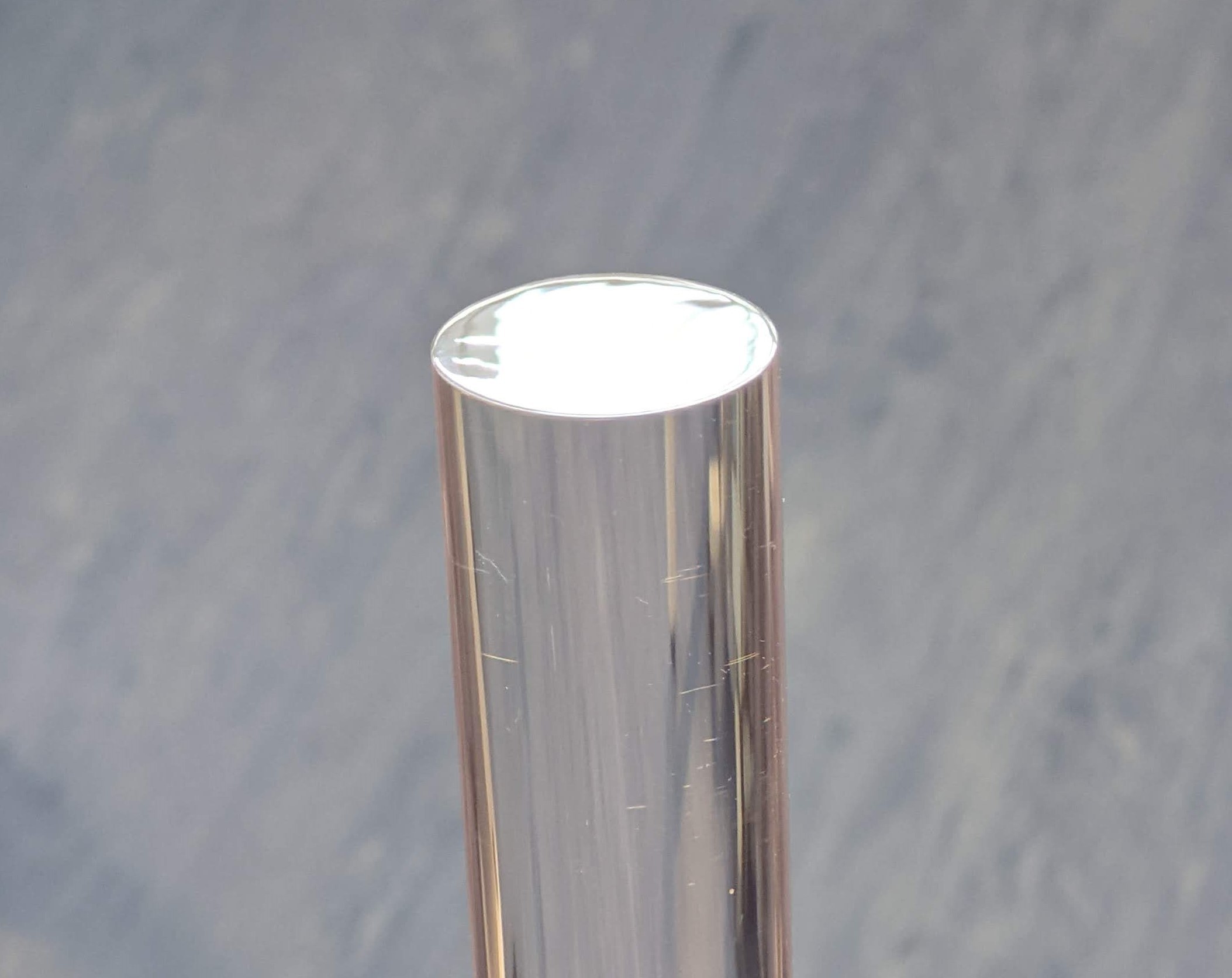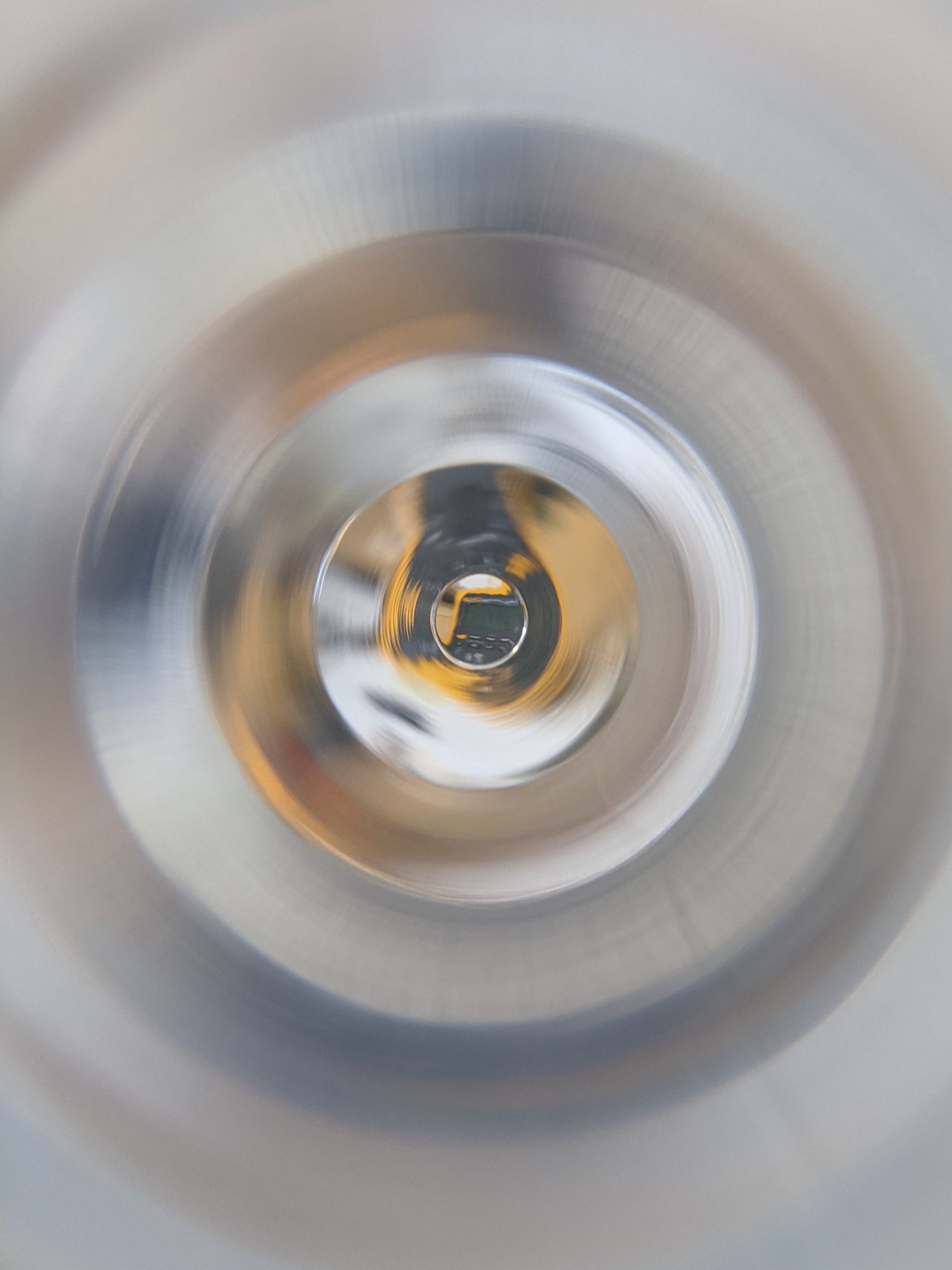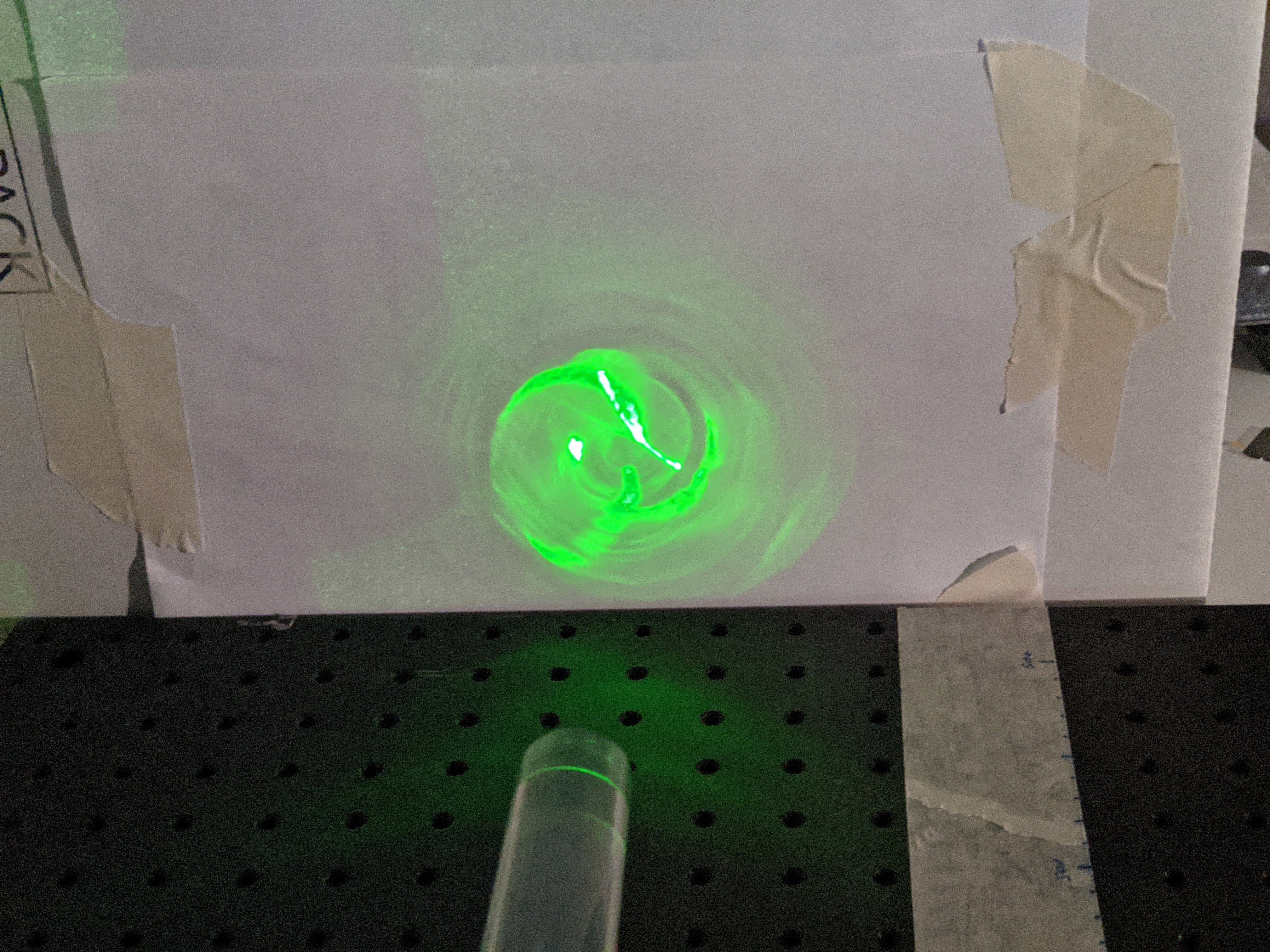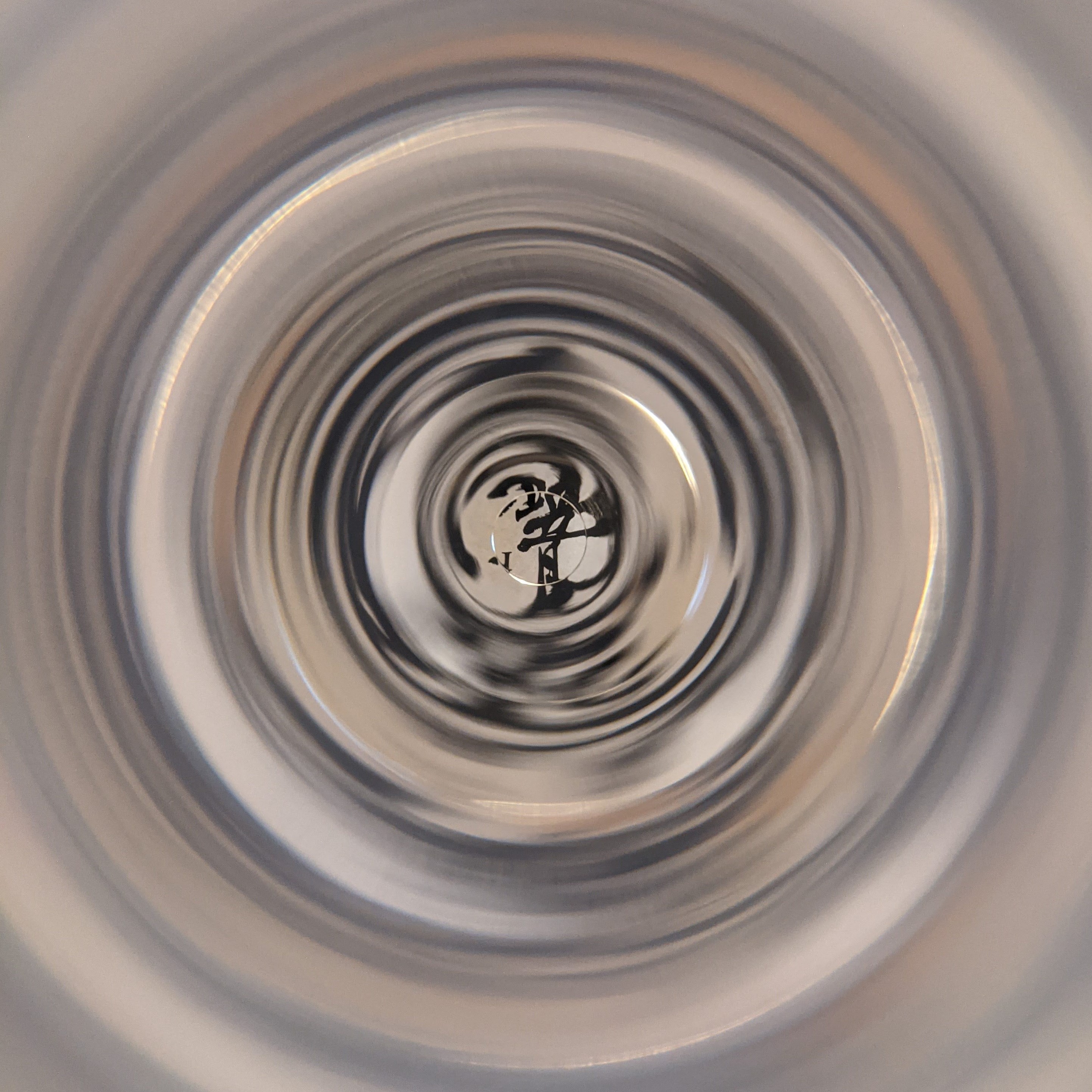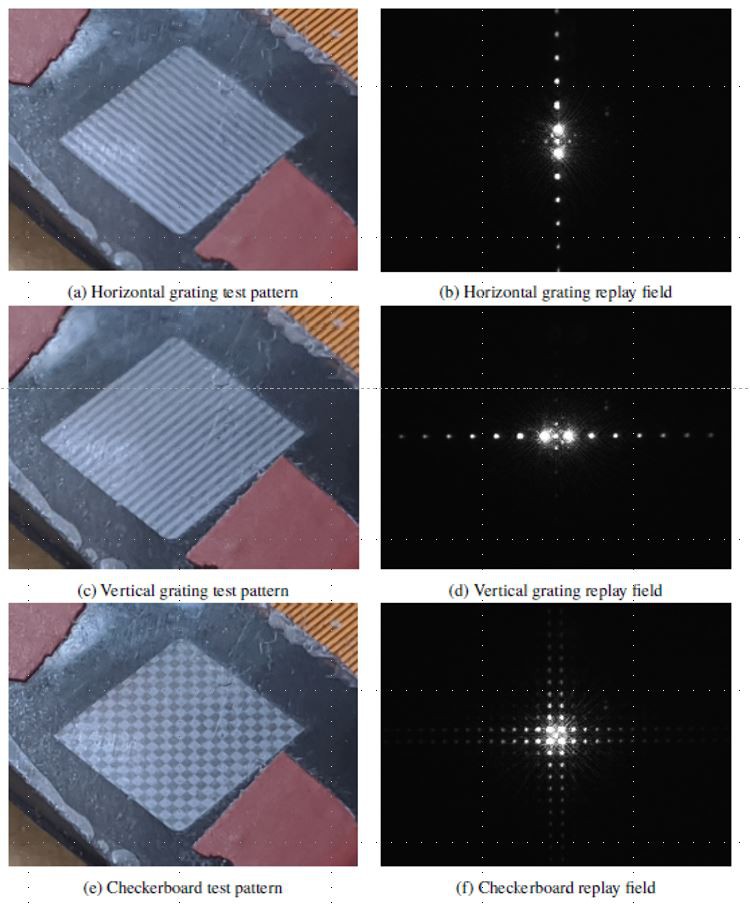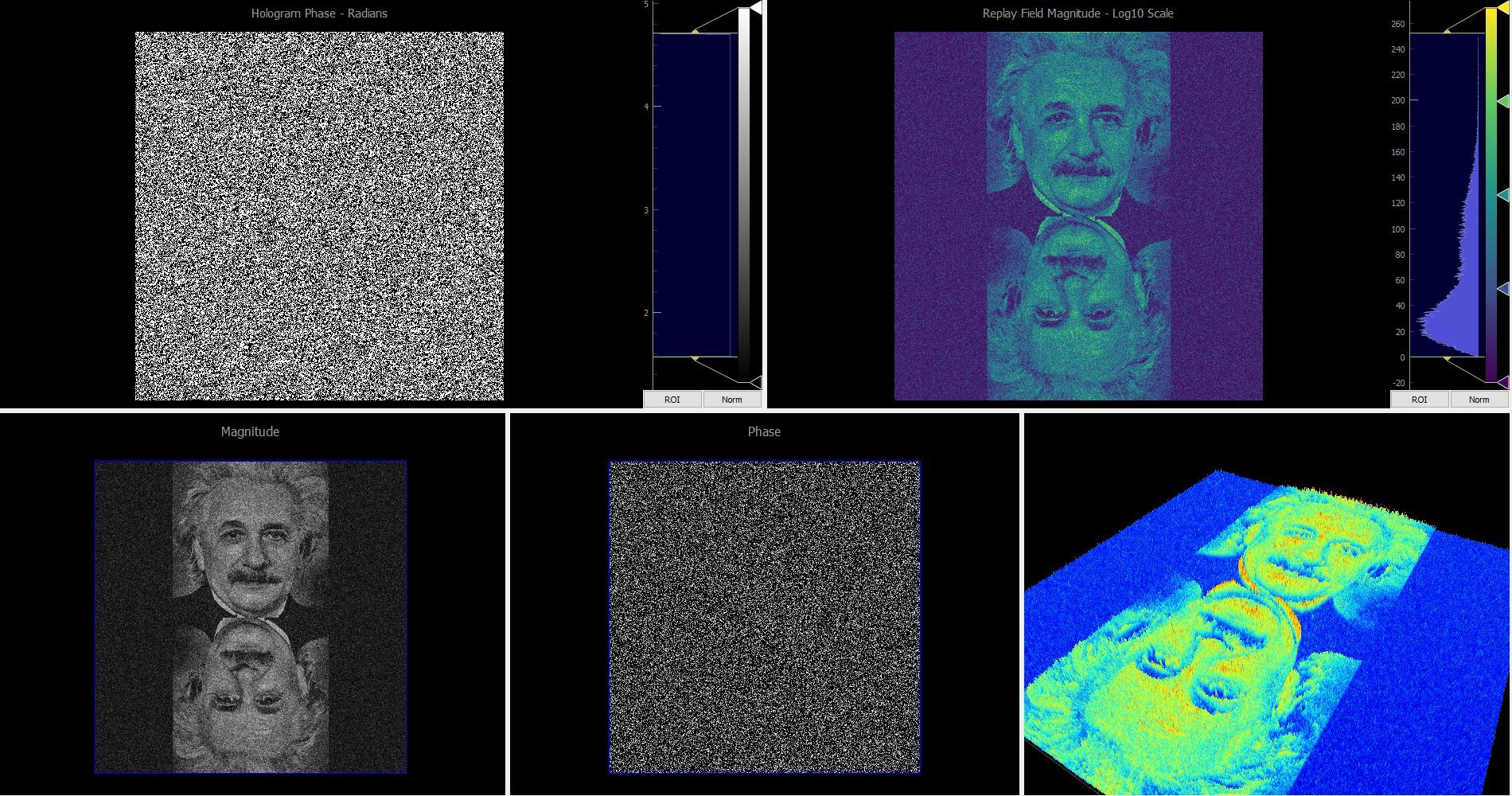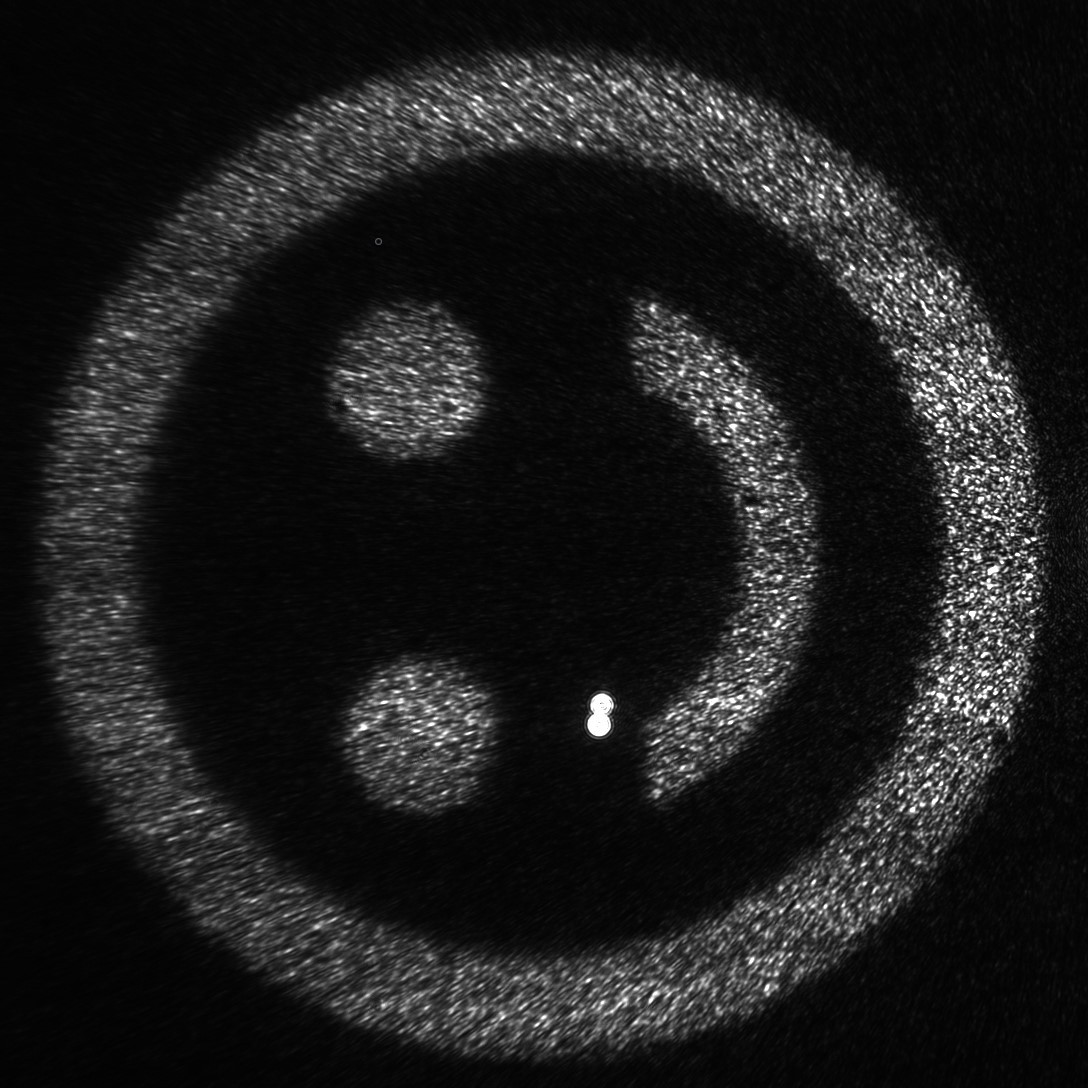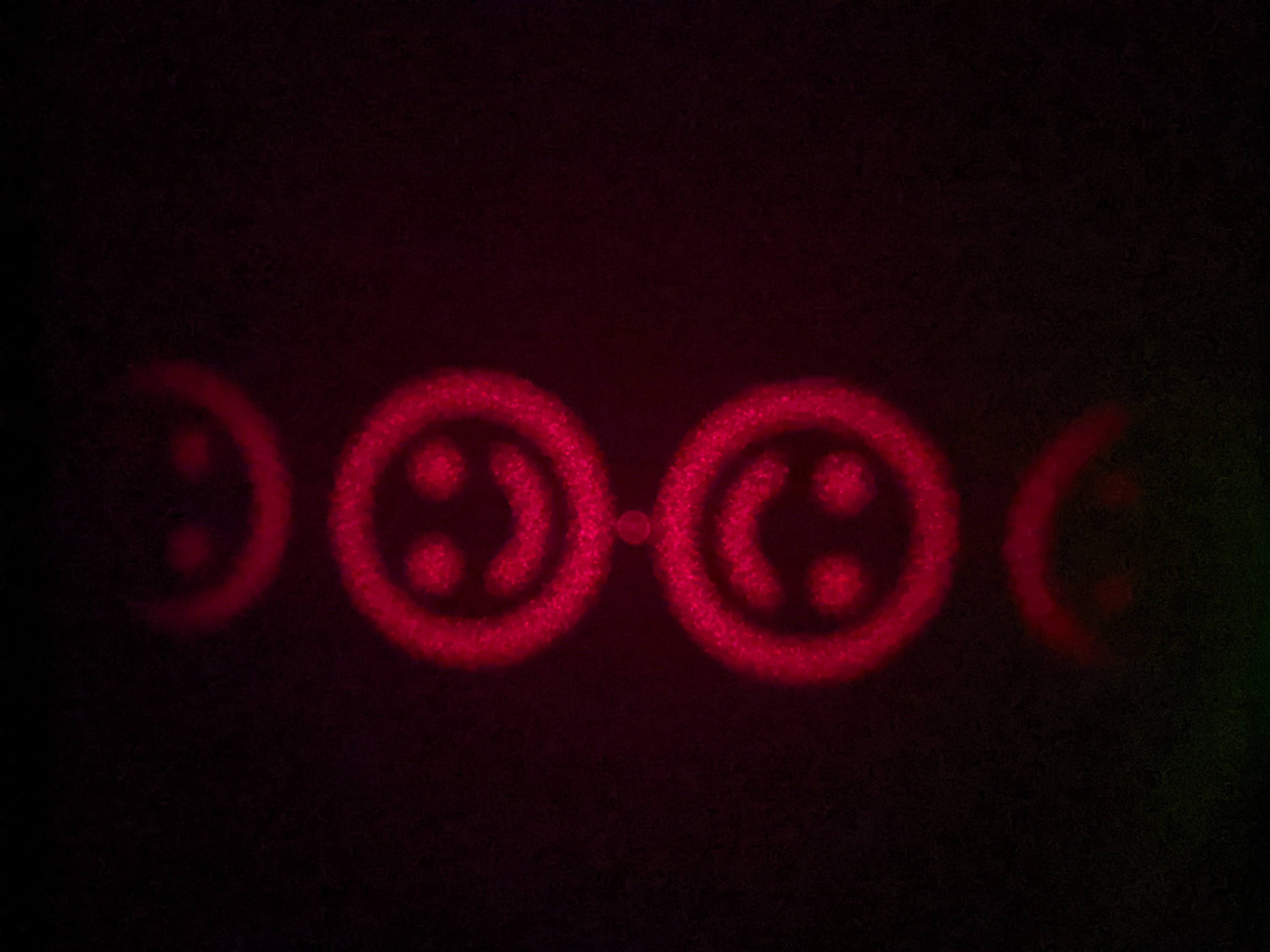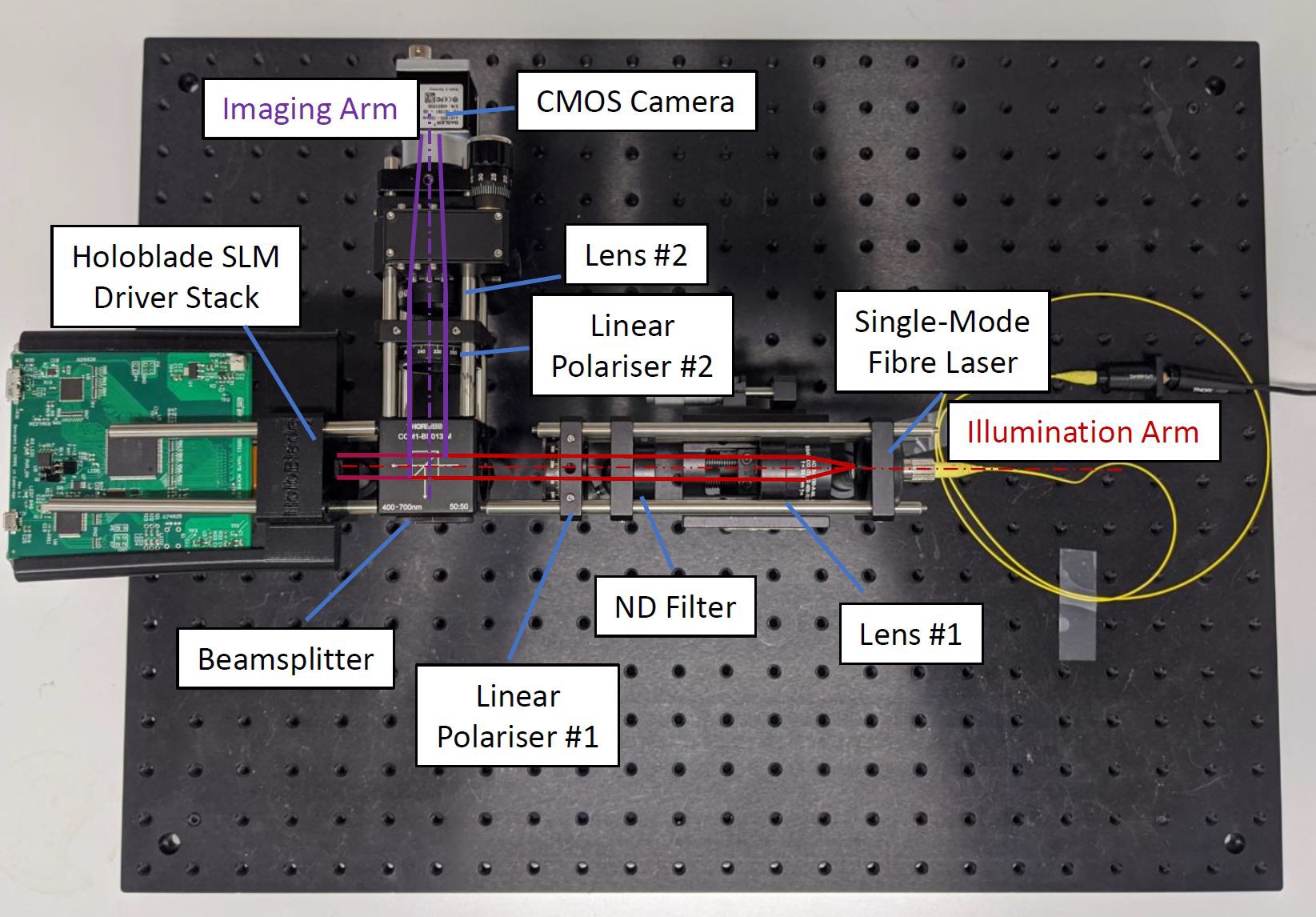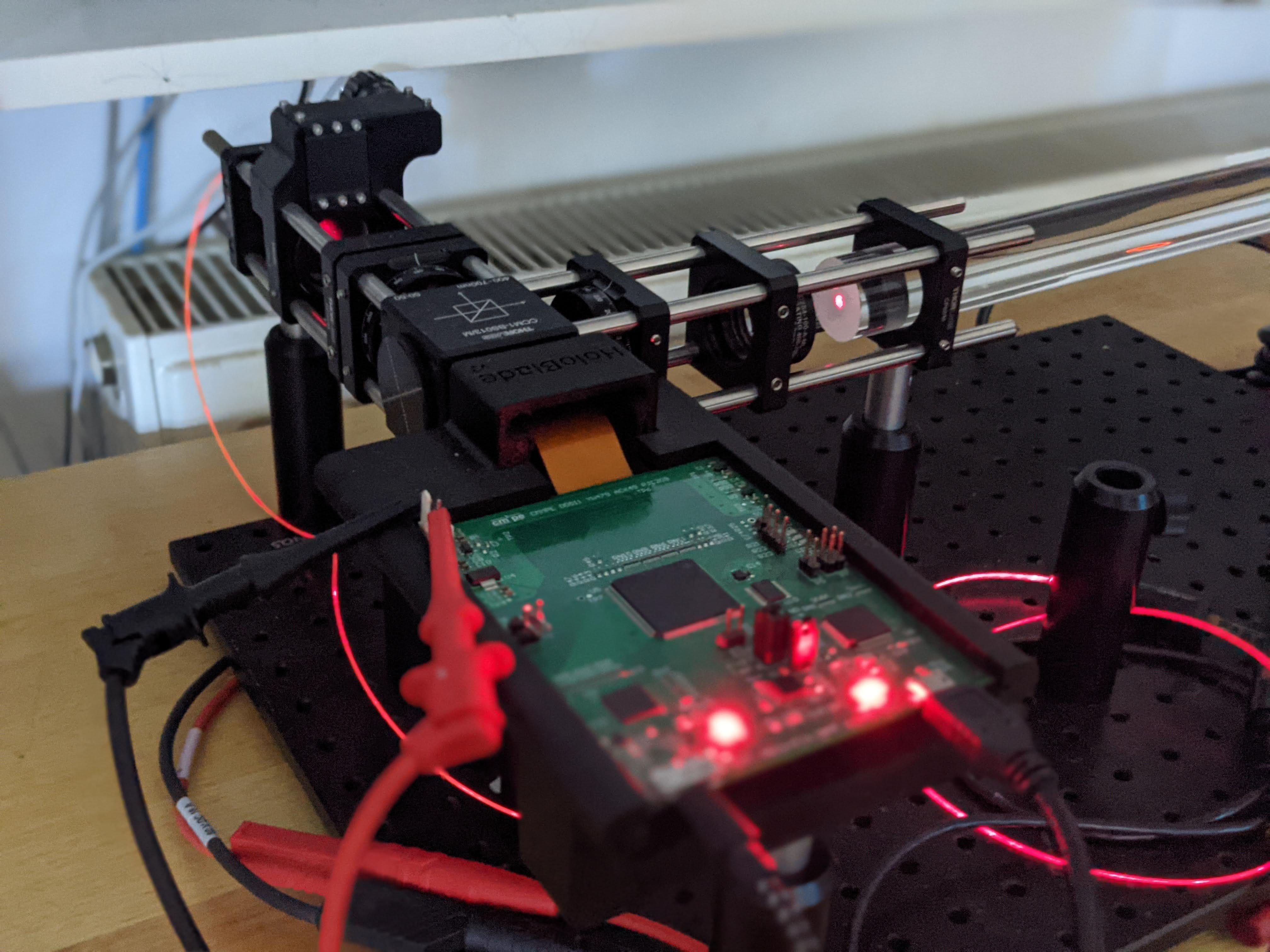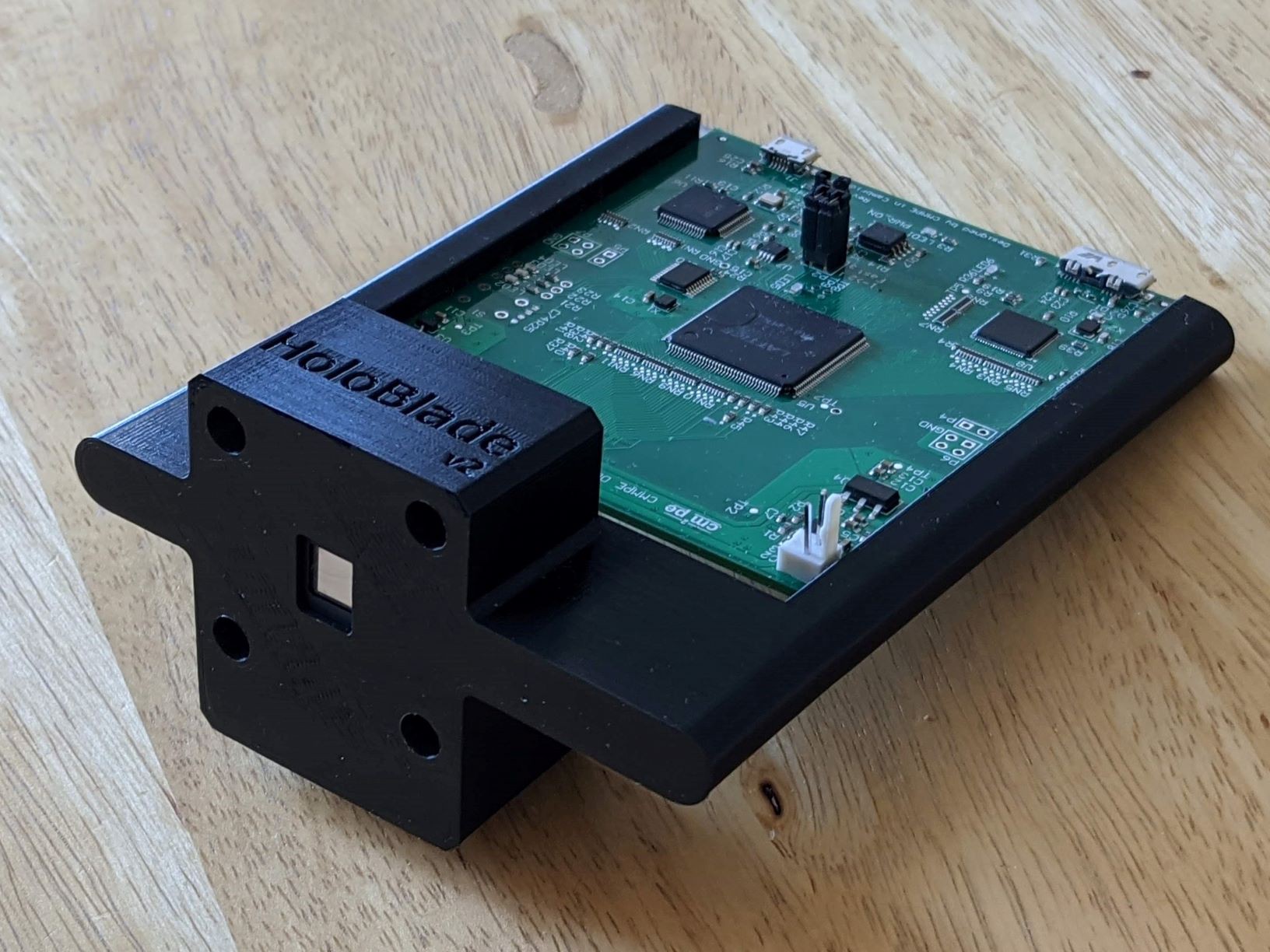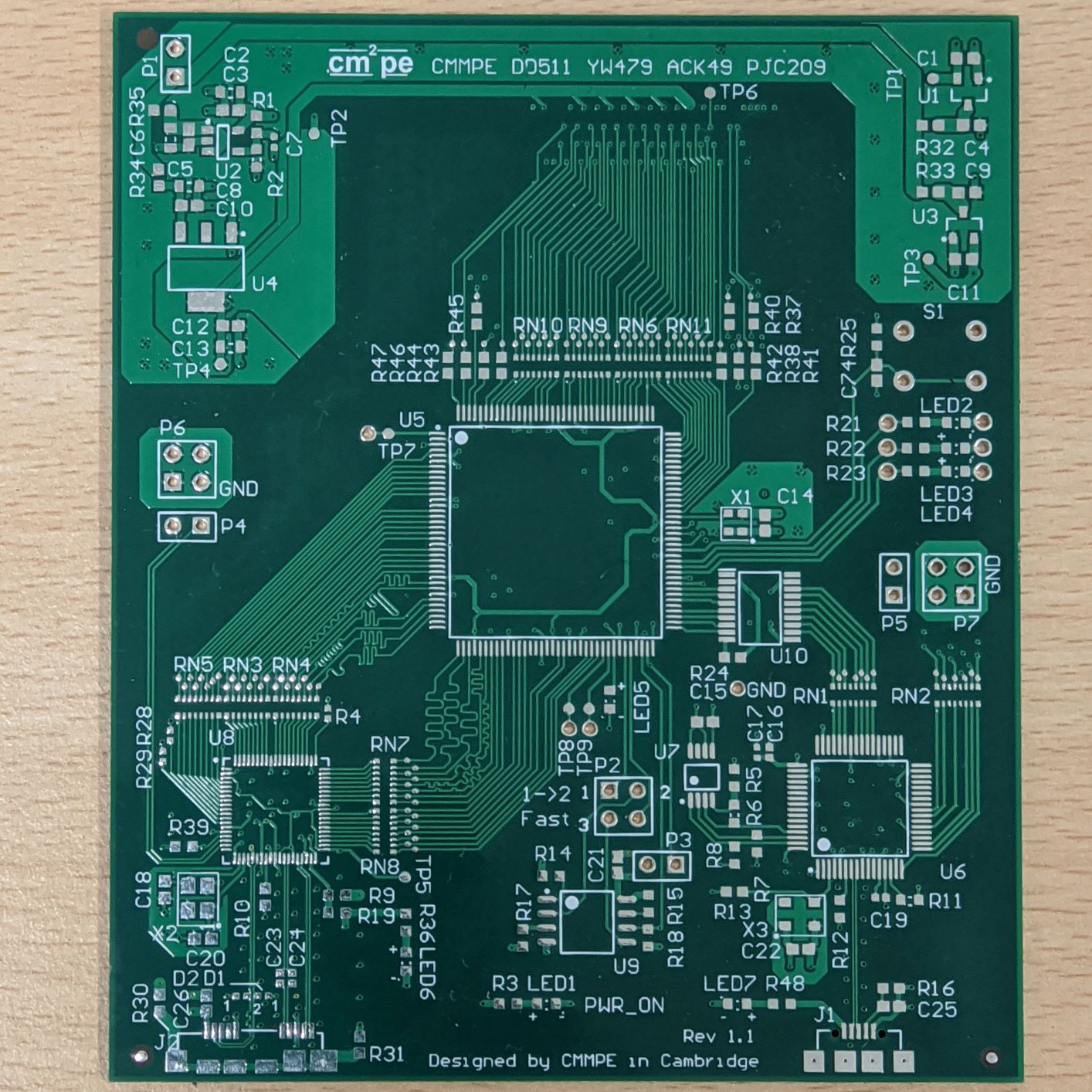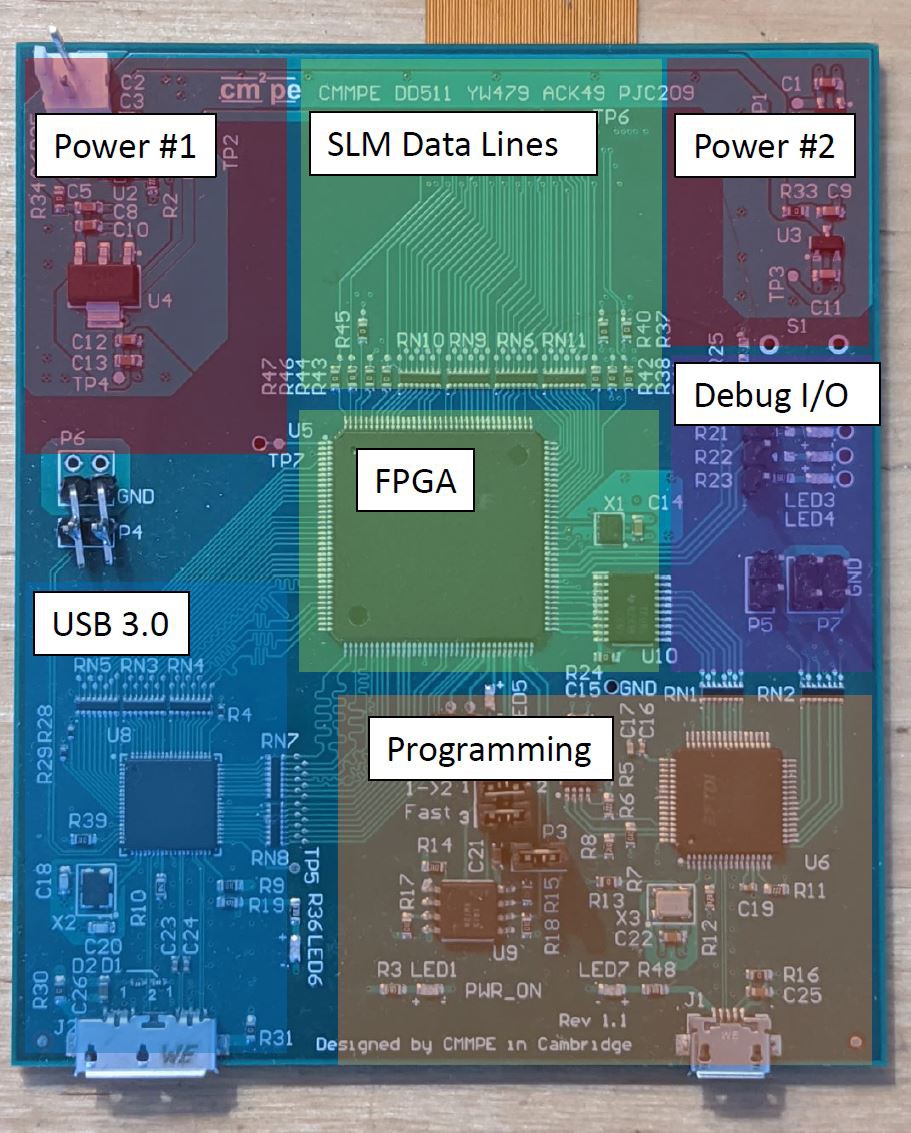-
Perspex Waveguide
06/14/2021 at 09:52 • 0 commentsOne of the big copncerns with the project is that it would not be possible to build a suitably transparent optical waveguide out of perspex. The resultant scatter would result in the breakdown of the wavefront structure and the display might not work. Hence, several tubes were procured to see if suitable waveguides could be constructed.
The tubes were cut to size.using a hacksaw and then a manual-milling machine. The finish after the milling machine was resaonable, but had to be further polished for the required optical performance
![]()
The polishing was performed using a polishing kit from RS and an electric hand-drill:
![]()
It was a two-stage process (first the coarse and then the fine mops seen above). The results were excellent, the quality of the finish is exemplary as can be seen below:
![]()
The waveguide can be viewed like a telescope, and works for both imaging as well as projecting wavefront (see both below):
![]()
![]()
Finally, it is possible to see the different TIR effects looking down the pipe, when looking at a darker object, this results in a very beautiful view of nature in action.
![]()
-
Holographic Algorithms
06/14/2021 at 09:33 • 0 commentsComputer-Generated Hologaphy (CGH) is the process of generating holograms using purely simulated data. A typical configuration here is to place the Hologram at the focal length of a lens (Fourier plane), illuminating the hologram with a uniform wavefront (in the form of a collimated laser gaussian-spot) will then result in the inverse-fourier transform of the holgram being displayed at the output plane. This process is the basis of Fourier Optics (https://en.wikipedia.org/wiki/Fourier_optics). Sample gratings for this can be seen here:
In order to generate holgraphic wavefronts for this system, it was necessary to apply an appropriate algorithm. Here we applied Gerchberg-Saxton, a classical phase-retreival algorithm (https://en.wikipedia.org/wiki/Gerchberg%E2%80%93Saxton_algorithm). Outputs from simulation can be seen below where a 2-D image of Albert Einstein is being projected using a binary-phase hologram (our SLM is a binary-phase device so this represents what it achievable). The magnitude and the phase of the wavefront are also visualised in the replay field:
![]()
In addition to this, the 4-F system previously showen has also been used to generate images. Here is a smiley-face image read directly off the camera in said system (Note that it is a monochromatic camera as colour cameras using a Bayer-filter are less sensitive to laser illumination. This image is showing what a human eye placed at this position in space would see:
![]()
In addition, it is possible to generate your Hologram purely in the far-field without a lens if the replay field is suitably far from the hologram. This is because the wavefronts have suitably 'flattened' by this point that they effectively are no longer curved. This configuration is desirable for our display as the light propagation in this case is less complicated as the image is not affected by the phase-curvature introduced by the Fourier-Lens. The below 'lensless' hologram image was taken at a distance of 58cm from the SLM. Note that the image has been projected onto a diffuse surface (in contrast with the images taken with a monochromatic camera above).
![]()
-
Optical Setup
06/14/2021 at 09:10 • 0 commentsThe system uses a 4-F imaging system for the projection opitcs. This is a standard CGH approach where the SLM is placed at the fourier-plane of an imaging lens. This allows the display to produce a complex wavefront based on the the phase-retardation of the wavefront at the holographic plane.
The configuration can be seen below along with collimation optics and rotational polarizers (the particularl SLM used here only works with certain light polarisations as it acts as an electronically-switchable quarter-wave plate). A camera has been placed at the imaging plane in this configuration to provide accuracte sensing of the output replay field.
For the display system, a perspex pipe shall be placed at the output of the display. This shall act as the display-surface. This configuration can be seen below with a gaussian spot incident on the entrance-facet of the perspex waveguide:
![]()
Note that ths focus of this project is to produce a functional demonstrator prototype. The system size and footprint can be dramatically reduced but that is beyond the scope of this project (and tooling costs for optics are expensive!!).
-
Display Engine - HoloBlade SLM
06/14/2021 at 08:10 • 0 commentsA key challenge with CGH (Computer-Generated Holography) Displays is the 'actuator' to manipulate the wavefront. These are typically expensive, niche scientific equipment and not readily available for general use.
In the spirit of making Holographic technologies more widely available, HoloBlade has been developed. This is the world's first open-source SLM driver-stack considering of a SLM, the supporting electronics, optical-breadboard compatible mechanical housing, FPGA driver RTL-Logic and the PC-side software to driver the SLM.
The repository for HoloBlade can be found on github at https://github.com/andrewkadis/HoloBlade.
The HoloBlade 'whitepaper' has been peer-reviewed and published in Applied Optics at https://www.osapublishing.org/ao/viewmedia.cfm?uri=ao-60-4-A313&seq=0. Further technical details of the driver-stack and design can be found in this paper.
This project shall utilise HoloBlade as the 'display engine' for the wavefront projection. HoloBlade driver stack:
![]()
HoloBlade PCB:
![]()
PCB Regions:
-
What is a Hologram?
06/14/2021 at 07:53 • 0 commentsThere is a large degree of confusion with what is and what is not a Hologram. The term has come to mean a wide-gammut of ghost-like images floating in the air in popular-culture (such asPrincess Leia's 'Holographic' message).
However, the author might be suprised to learn that Holography is actually an extremely well-understood, mature field. Holography is the process of recording, generating and displaying wavefronts (or lightfields). Moreover, Holography is not a recent development, Dennis Gabor was awarded the Nobel Prize for Holography in 1971, and its appliclications are widespread, as seen from the ubiquiotous holographic film on the back of credit cards and passports.
Holography offers the Ultimate Display technology. For a perfect Hologram, the difference between a synthetic and real object is indistinguishable. This can be seen in the animation below, where the entire complex wavefront of several holograms can be captured in a single hologram of the scene.
In this project, we are utilising CGH (computer-generated holography), a process where a holographic wavefront is generated directly from synthetic data. This allows us to produce a wavefront which is suitably distorted to allow our display image to be projected through the perspec waveguide and onto the surface of our transparent display.
Holographic Wavefront Cylindrical Display
A 360-degree cylindrical display driven by Holographic Wavefront Projection Principles
 Andrew Kadis
Andrew Kadis